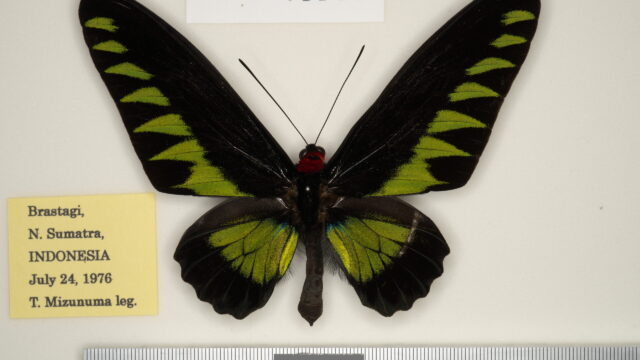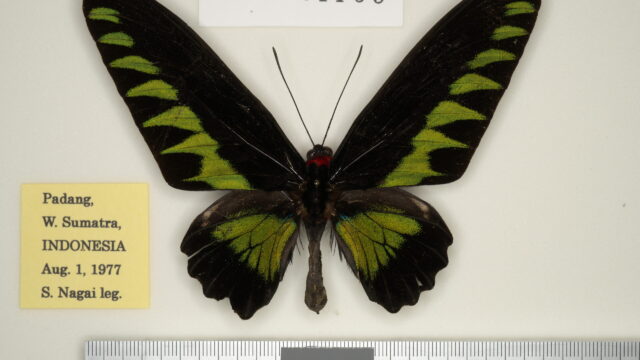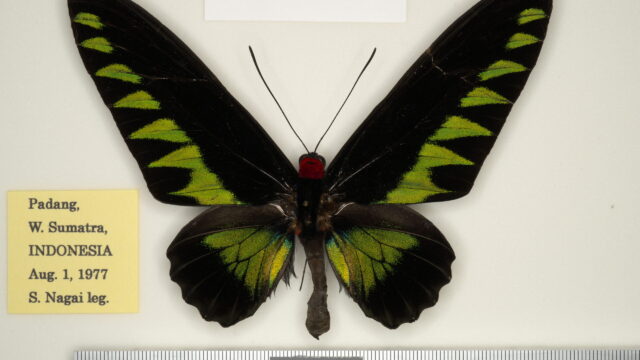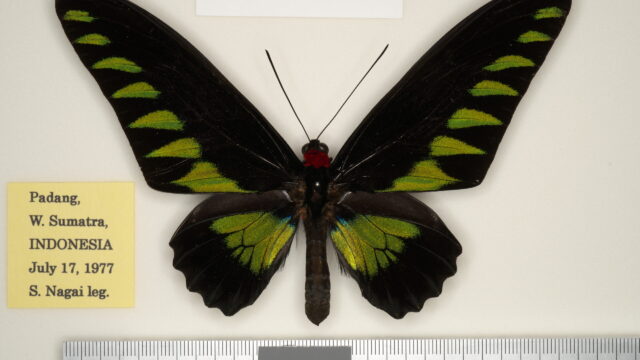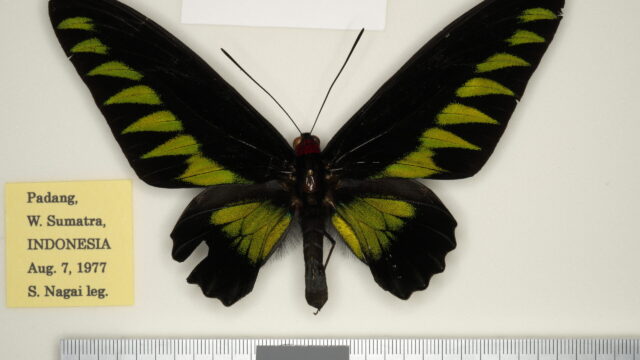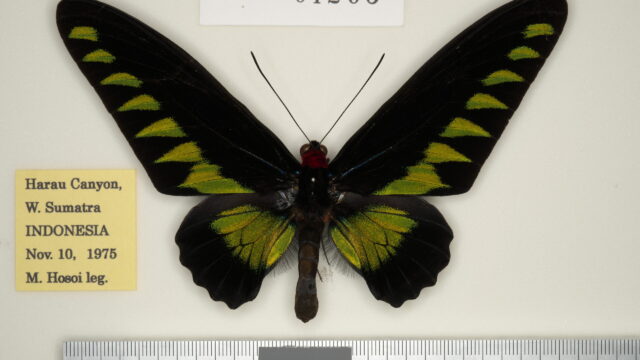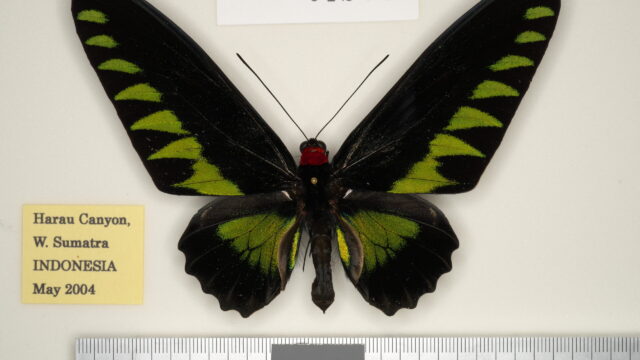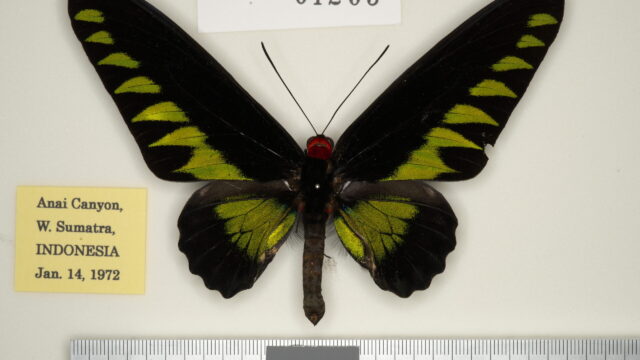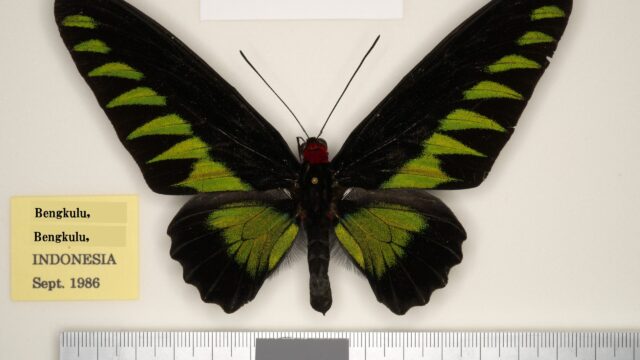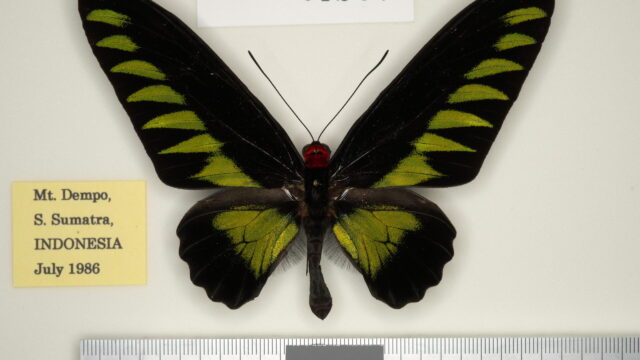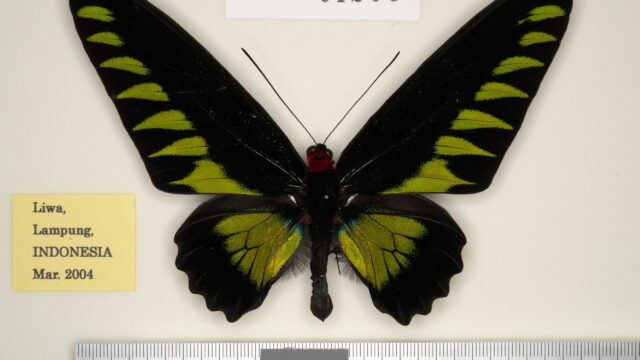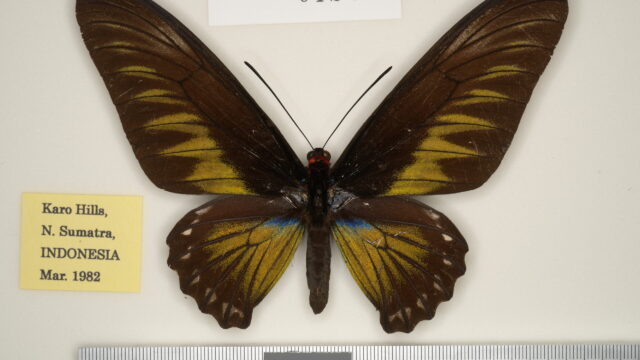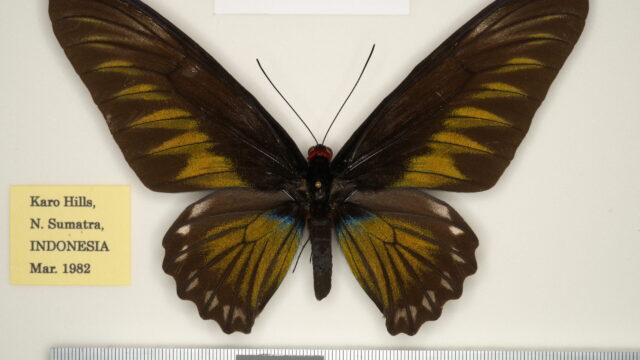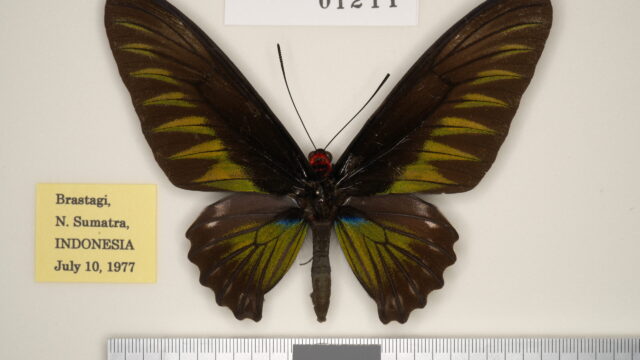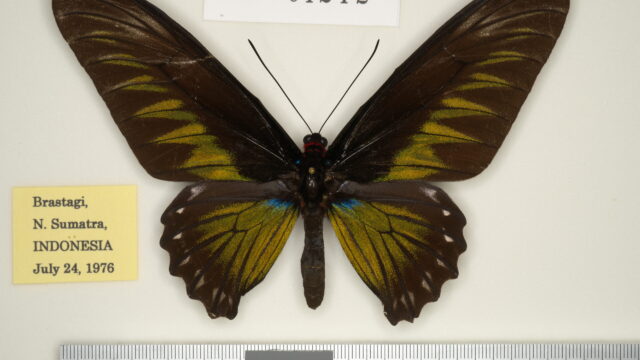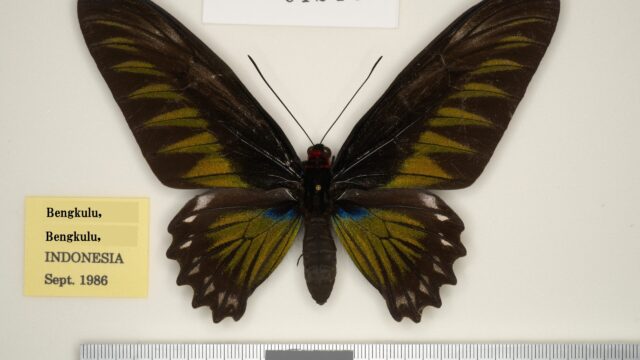4. Ssp. trogon (Snellen van Vollenhoven, 1860)17) [♂] [♀: eleanor (Walker, 1889)18)]
= eleanor (Walker, 1889)18) [♀] (unknown (trogon ? or mollumar ?)
(Distribution) [Map 62]
INDONESIA (Sumatra) [Aceh] Mt. Seulawah, Meuraboh, Seumanjam, Tapaktuan, Subulussalam, Simpang Kiri, Kuala Simpang, [N. Sumatra] Bohorok, Kuala, Binjai, Medan, Serdan, Tanjung Morawa, Bandar Baru, Mt. Sibayak, Sikulikap, Berastagi, Susuk, Karo Hills, Balimbingan, Asahan River basin, [Riau] Rokan, Tandun, [W. Sumatra] Pangkalankotabaru, Lembah Harau (=Harau Canyon), Bukittinggi, Lembah Anai (=Anai Canyon), Solok, Padang, Surian, [Bengkulu] Barisan Range, Bengkulu, [S. Sumatra] Lubukbancala, Mt. Dempo, Tanjungsakti, Lake Ranau area, Belitung (=Billiton) Is., [Lampung] Liwa, Telukbetung. (Type locality: Inland of Sumatra)
(Episodes of discovery and original description)
In 1859, Sieveking donated two ♂♂ specimens collected in the interior of Sumatra to the Musée royal des Pays-bas à Leide (Royal Museum of Natural History of Pays-bas). Based on the specimens, van Vollenhoven (1860) described it as a new species and gave it the species name trogon. The species name is derived from the similarity of the shape and coloration of the forewing spots to those of the “Trogon resplendens” = quetzal (Pharomachrus mocinno), which is found in Guatemala and Mexico. The shiny black ground color of the wings is the same as that of the bird, the cuneate golden-green spots on the forewings resemble the ornamental feathers hanging from the bird’s back, and the crimson color of the neck and lateral breast can be seen on the bird’s breast.
(Characteristics)
An old, well known and rather small subspecies and whitish patches are small in both sexes, which are characteristic of the Sumatra Family.
(Spotted pattern)
♂: Rather difficult to distinguish from other subspecies, but the green wedge-shaped patches on FW are smaller and often isolated from each other. The white spots on apex of HW is minute or absent. On the undersurface of both FW and HW, white spots on submarginal area are small.
♀: All yellowish green wedge-shaped patches on FW are present, without subapical white color. The green patch of HW extends to submarginal area, but whitish submarginal sagittal-shaped spots are unclear. Same as ssp. mollumar, such a pattern reminds us of a male.
(Variation)
♂-f. julijae Shaoji, 200716): [Aberrant FW pattern] A small extra metallic green patch (near triangular shaped) on FW apex in addition to the usual 7 green wedge-shaped patches, which makes a row with 8 spots in total.
♂-f. walshi Haugum & Low, 19824): [Aberrant FW pattern] There are semi-translucent, dull brown area, which replace the normal green and black scaling neatly, broadly bordering all veins of FW cell (except its apex) and the bases of the adjacent veins. The brown areas have an outer marginal border of a weakly iridescent blue.
♂-f. walshoides Haugum & Low, 19824): [Aberrant FW pattern] The base of FW with approximately 2/3 of the cell, also a smaller area at the very base of HW, are dominated by plain brown scales.

